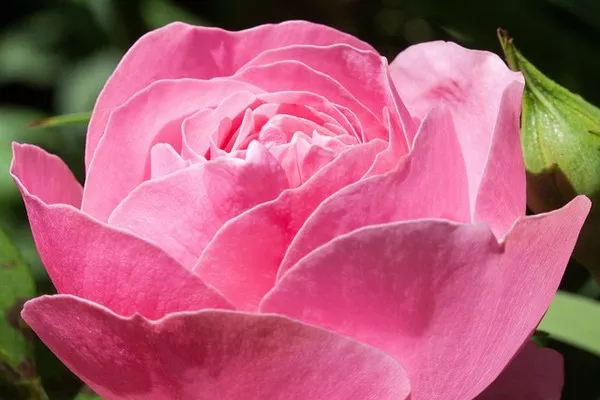Flowers have long been admired for their beauty and fragrance, but did you know that many of them are also edible? Incorporating edible flowers into your culinary creations not only adds a pop of color and flavor but also introduces a unique element to your dishes. From salads to desserts, there is a wide variety of flowers that can be safely consumed, each offering its own distinct taste and texture. In this guide, we will explore the types of flowers that are edible, how to safely select and prepare them, and creative ways to incorporate them into your cooking.
Understanding Edible Flowers
Edible flowers encompass a diverse range of blooms that are safe for consumption. While not all flowers are edible, there is a surprising variety that can be enjoyed in both sweet and savory dishes. It’s important to note that only flowers that have been grown specifically for consumption should be eaten, as those from florists or garden centers may have been treated with pesticides or other chemicals that are not safe for ingestion.
Popular Edible Flowers
1. Roses: Known for their delicate aroma and romantic symbolism, roses are also edible. The petals have a subtle flavor that can range from slightly sweet to mildly tangy, depending on the variety. They make a stunning addition to salads, desserts, and even beverages.
2. Calendula: Also known as marigold, calendula flowers have vibrant orange or yellow petals with a slightly peppery flavor. They are often used to add color and flavor to soups, stews, and rice dishes.
3. Nasturtiums: Nasturtiums are prized for their vibrant hues of orange, yellow, and red, as well as their peppery taste reminiscent of watercress. Both the flowers and leaves are edible and can be used to garnish salads, sandwiches, and appetizers.
4. Lavender: With its calming fragrance and subtle floral flavor, lavender is a versatile edible flower. It pairs well with sweet dishes such as ice cream, shortbread cookies, and lemonade, adding a fragrant twist to desserts.
5. Violets: These delicate flowers come in shades of purple, blue, and white, and have a subtly sweet flavor with hints of wintergreen. Violets are often crystallized and used to decorate cakes and pastries or infused into syrups and jams.
6. Chrysanthemums: Chrysanthemum petals have a slightly bitter taste reminiscent of arugula or chamomile. They are commonly used in Asian cuisine, where they are added to salads, stir-fries, and teas.
7. Dandelions: While often considered a nuisance in the garden, dandelions are entirely edible, from their bright yellow petals to their bitter greens. The flowers can be used to make wine, jelly, or infused into vinegar, while the leaves are enjoyed in salads or cooked like spinach.
Selecting and Preparing Edible Flowers
When selecting edible flowers, it’s essential to choose those that have been grown without the use of pesticides or other chemicals. If you’re unsure, opt for organic varieties or grow your own flowers specifically for culinary use. Harvest flowers in the morning when they are at their freshest, and choose blooms that are fully open and free from blemishes or signs of decay.
Before consuming edible flowers, it’s crucial to wash them thoroughly to remove any dirt or insects. Gently rinse the flowers under cold water and pat them dry with a paper towel. Remove any green parts, such as stems or sepals, as they can be bitter or tough. Edible flowers are best used fresh but can also be stored in the refrigerator for a few days in an airtight container lined with paper towels.
Creative Ways to Use Edible Flowers
Once you’ve selected and prepared your edible flowers, the possibilities for incorporating them into your cooking are endless. Here are some creative ideas to inspire you:
Salads: Add a pop of color and flavor to your salads by tossing in a handful of edible flowers. They make a beautiful garnish and can elevate a simple green salad to a culinary masterpiece.
Desserts: Decorate cakes, cupcakes, and other desserts with edible flowers for a stunning presentation. Candied flowers can also be used to adorn pastries or dipped in chocolate for an elegant treat.
Beverages: Infuse teas, lemonades, and cocktails with the delicate flavors of edible flowers. Lavender, rose, and hibiscus are particularly popular choices for floral-infused beverages.
Savory Dishes: Experiment with incorporating edible flowers into savory dishes such as risottos, omelets, and pasta dishes. They can add a subtle floral note and visual appeal to your favorite recipes.
Preserves: Preserve the beauty and flavor of edible flowers by making jams, jellies, or syrups. These homemade preserves make delightful gifts and are perfect for spreading on toast or drizzling over pancakes.
Safety Considerations
While many flowers are safe for consumption, it’s essential to exercise caution and do your research before eating any unfamiliar blooms. Some flowers may cause allergic reactions or have toxic properties, especially if consumed in large quantities. If you have any doubts about the safety of a particular flower, it’s best to err on the side of caution and avoid eating it.
Additionally, it’s essential to source edible flowers from reputable sources and ensure they have been grown organically without the use of pesticides or other chemicals. If you have any concerns about the safety of edible flowers, consult with a knowledgeable expert or reference trusted resources on edible plants.
Conclusion
In conclusion, edible flowers offer a delightful way to enhance both the flavor and presentation of your culinary creations. With a diverse array of blooms to choose from and endless possibilities for incorporating them into your cooking, experimenting with edible flowers is sure to inspire your inner chef. So why not add a touch of floral elegance to your next meal and let your creativity blossom?


